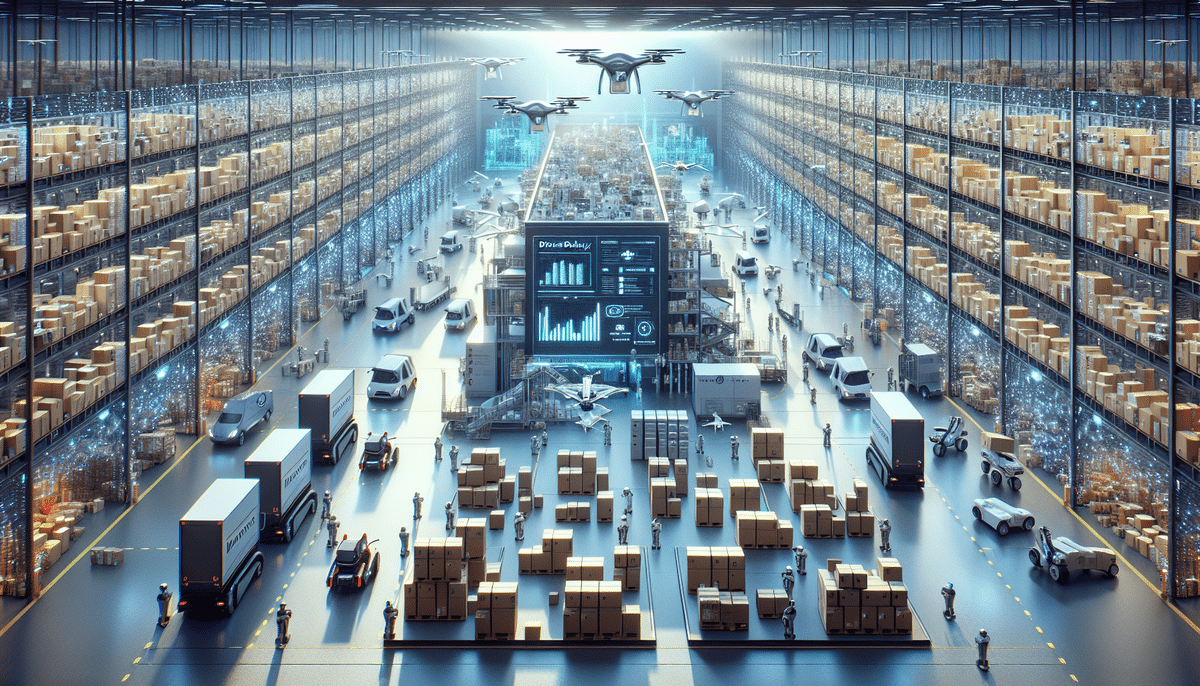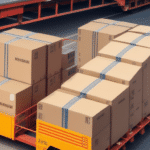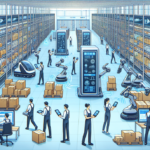The Benefits of Direct Delivery Only
In recent years, direct delivery only has emerged as a transformative method for businesses and consumers alike, enabling products to be delivered straight to doorsteps efficiently. This article provides a comprehensive explanation of direct delivery only, its advantages, and strategies for effective implementation.
What is Direct Delivery Only?
Direct delivery only is a supply chain strategy focused on delivering products directly to customers without intermediaries such as retailers or wholesalers. This approach means that products are shipped straight from the manufacturer or warehouse to the customer, bypassing traditional retail channels.
One of the primary advantages of direct delivery only is the increased control over the entire supply chain. By eliminating middlemen, manufacturers can ensure timely and efficient delivery of their products, leading to higher customer satisfaction and loyalty. Additionally, this method can result in cost savings for both manufacturers and customers by reducing overhead expenses associated with intermediaries.
However, implementing a direct delivery only strategy can present challenges. Manufacturers may need to invest in additional logistics and shipping infrastructure to handle the increased volume of direct deliveries. Moreover, without the support of retailers or wholesalers, businesses might need to allocate more resources to marketing and advertising to effectively reach potential customers.
Understanding the Concept of Direct Delivery Only
Direct delivery only is a business strategy that has gained traction with the rise of e-commerce and the growing demand for convenience and speed. Unlike traditional retail models, direct delivery only offers several benefits, including cost savings, faster delivery times, and the ability to customize products to meet consumer needs.
A key advantage is the enhanced control businesses have over their supply chain. By removing intermediaries such as wholesalers and retailers, companies can ensure their products reach end consumers promptly and without additional costs. This direct approach also provides greater visibility into the entire delivery process, enabling businesses to identify and resolve issues more effectively.
Furthermore, direct delivery only fosters stronger relationships with customers. Direct interactions allow businesses to collect valuable data on consumer preferences and buying habits, which can be leveraged to tailor future products and marketing campaigns. This personalization enhances customer experience, leading to increased loyalty and repeat business.
Why Direct Delivery Only is Gaining Popularity
Direct delivery only has surged in popularity for both businesses and consumers due to several factors. For businesses, it offers a cost-effective way to reach consumers without the overhead costs associated with traditional retail. Consumers benefit from the convenience of receiving products quickly without leaving their homes.
The COVID-19 pandemic significantly accelerated this trend. With social distancing measures in place, many consumers shifted to online shopping, preferring products to be delivered directly to their homes. This shift allowed businesses to continue operations while adhering to safety guidelines.
Additionally, direct delivery only enhances the personalized shopping experience. By leveraging data on consumer preferences and purchase history, businesses can tailor their offerings and marketing strategies to better meet customer needs, fostering increased loyalty and satisfaction.
How Direct Delivery Only Saves Time and Money
Direct delivery only offers substantial cost savings by eliminating intermediaries and the need for physical retail spaces. Businesses can reduce overhead costs related to rent, utilities, and staffing. Moreover, by shipping products directly from the warehouse or manufacturer to the customer, businesses can decrease shipping time and costs.
For customers, the convenience of direct delivery is a significant advantage. With the expectation of fast and efficient delivery in the e-commerce era, businesses can offer same-day or next-day delivery services, enhancing customer satisfaction and encouraging repeat business. Additionally, direct delivery only can reduce the environmental impact of shipping by minimizing packaging materials and optimizing transportation routes, thereby lowering the carbon footprint associated with product delivery.
The Environmental Benefits of Direct Delivery Only
Direct delivery only contributes positively to the environment by reducing the carbon footprint associated with transportation. By eliminating the need to transport products to multiple retail locations, this strategy decreases the amount of fuel consumed and emissions produced.
Moreover, direct delivery only promotes efficient inventory management, minimizing excess inventory that often results in waste. Products are produced and shipped based on confirmed orders rather than mass production, reducing the likelihood of unsold goods ending up in landfills.
Another environmental advantage is the reduction in energy consumption. Traditional retail stores require significant energy for lighting, heating, and cooling. Direct delivery only eliminates the need for large retail spaces, thereby lowering overall energy usage and contributing to sustainability efforts.
The Convenience of Direct Delivery Only for Consumers
Direct delivery only significantly enhances consumer convenience. With the increasing demand for quick and hassle-free shopping experiences, consumers appreciate the ability to receive products promptly without the need to visit physical stores.
Additionally, direct delivery only offers increased security for consumers. Traditional delivery methods often involve leaving packages unattended on doorsteps, which can lead to theft or damage. Direct delivery ensures that packages are delivered directly to consumers, reducing the risk of loss or harm and providing peace of mind.
The Role of Technology in Direct Delivery Only Services
Technology is integral to the success of direct delivery only services. The rise of e-commerce necessitates the use of advanced technologies to manage sales, shipping, and order fulfillment effectively. Essential technologies include:
- Inventory Management Software: Automates stock level updates and alerts to prevent stockouts.
- Shipping and Tracking Software: Provides real-time updates on order status and delivery estimates.
- Customer Relationship Management (CRM) Software: Manages customer data and interactions to enhance service quality.
Automation through these technologies not only saves time but also reduces the risk of human error. For instance, automated inventory management ensures accurate stock levels, while shipping software keeps customers informed about their orders, enhancing the overall customer experience.
How Businesses Can Benefit from Direct Delivery Only
Direct delivery only offers numerous benefits for businesses of all sizes. Key advantages include:
- Global Reach: Enables businesses to expand their customer base internationally without the need for physical stores.
- Cost Reduction: Lowers overhead costs by eliminating expenses related to physical retail spaces.
- Customer Insights: Provides valuable data on customer preferences and behaviors, allowing for more targeted marketing and product development.
- Sustainability: Supports eco-friendly practices by reducing transportation emissions and packaging waste.
By adopting a direct delivery only model, businesses can improve their profitability while also contributing to a more sustainable future.
The Impact of Direct Delivery Only on Traditional Retailers
The rise of direct delivery only has significantly impacted traditional retail models. As more consumers opt for online shopping, traditional retailers face increased competition and pressure to adapt. Some have struggled to maintain profitability, leading to store closures, while others have successfully integrated direct delivery strategies to stay competitive.
Traditional retailers are now compelled to offer quick and convenient delivery options to meet consumer expectations. This shift has led to increased investment in e-commerce platforms and partnerships with logistics providers to enhance their direct delivery capabilities.
However, retailers that embrace direct delivery only can tap into new market opportunities, reach a broader audience, and offer competitive pricing by reducing overhead costs.
How to Implement a Successful Direct Delivery Only Strategy
Implementing a successful direct delivery only strategy involves careful planning and investment in the right technologies. Key steps include:
- Assess Product Offerings: Ensure that products are suitable for direct shipping and meet customer demand.
- Invest in Logistics: Develop a robust logistics and shipping infrastructure to handle direct deliveries efficiently.
- Leverage Technology: Utilize inventory management, shipping, and CRM software to streamline operations.
- Enhance Customer Communication: Provide clear and timely updates on order status through automated notifications and tracking systems.
- Focus on Marketing: Invest in digital marketing strategies to reach and engage potential customers effectively.
Effective customer communication is crucial. Businesses should ensure that customers receive regular updates on their orders, including tracking information and estimated delivery dates. This transparency enhances customer satisfaction and builds trust.
Overcoming Challenges in Direct Delivery Only Services
While direct delivery only offers numerous benefits, it also presents challenges that businesses must address to succeed:
- Ensuring Timely Delivery: Managing delivery schedules during peak seasons and high-demand periods can be challenging. Investing in scalable logistics solutions can help mitigate this risk.
- Managing Returns: Establishing an efficient returns process is essential to maintain customer satisfaction.
- Customer Service: Providing robust customer support to handle inquiries and issues promptly is crucial for maintaining trust.
- Supplier Coordination: Effective collaboration with suppliers and manufacturers is necessary to ensure smooth operations.
By proactively addressing these challenges, businesses can enhance the effectiveness of their direct delivery only strategies and achieve long-term success.
The Future of Direct Delivery Only
The future of direct delivery only appears promising as consumer preferences continue to evolve towards convenience and speed. Advances in technology and logistics will further enhance the efficiency and reliability of direct delivery services, making them even more attractive to both businesses and consumers.
Emerging technologies such as artificial intelligence (AI) and automation will play a significant role in optimizing supply chains, predicting demand, and managing deliveries more effectively. Additionally, sustainable practices will become increasingly important, driving businesses to adopt eco-friendly delivery solutions.
In conclusion, direct delivery only offers significant benefits for both businesses and consumers by eliminating intermediaries, reducing costs, and providing greater convenience. To succeed, businesses must carefully plan their product offerings, invest in the necessary logistics and technology infrastructure, and maintain strong customer communication. As the e-commerce landscape continues to grow, direct delivery only will remain a vital strategy for staying competitive and meeting the evolving demands of consumers.




















